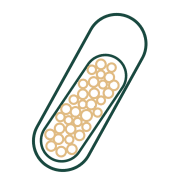In our countries, vitamin D deficiency is common due to insufficient exposure to daylight. A lack of vitamin D is also seen more frequently among people with darker skins, people with chronic intestinal diseases and alcoholics. Diet and exposure to daylight may not be sufficient to cover daily needs in those aged over 60. Vitamin D is used together with calcium to prevent osteoporosis. Recent studies have suggested that vitamin D supplements may improve strength and relieve musculoskeletal pain. A study revealed that very low vitamin D levels are associated with an increased risk of moderate to severe back pain and lumbar disc degeneration. So, in the event of back pain, women should consult a doctor to check whether they need vitamin D supplements.
The recommended dose is 400 to 2,000 UI (10 to 50 µg) per week or a single dose per month. In adults, the recommended additional intake is 10 μg/day, but this should be increased to 15 μg/day in people at risk of osteoporosis and 20 μg/day during pregnancy and breastfeeding and, in accordance with a recent European expert report, in the elderly (Brouwer-Brolsma et al., 2013).
Taken in too high doses, vitamin D may lead to excess calcium in the blood (hypercalcaemia), and in the urine (hypercalciuria) and encourage the formation of calcium oxalate kidney stones. It is not advisable to exceed 115 µg of vitamin D per day.


